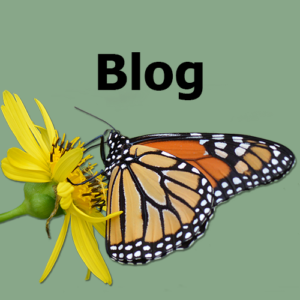
Many people believe that nature is only “out there” – in national parks, other large chunks of pristine land, or some far-off exotic place. For a long time, I did too. But the truth is that nature is everywhere and there are still plenty of discoveries to be made about the common species inhabiting our yards and communities.
We have the opportunity, as individuals and as communities, to make valuable contributions to the local ecosystems and to a better understanding of the organisms that share our yards and communities. This is especially true in the eastern U.S. where the vast majority of land is privately owned. But before we can do any of that, we have to value and appreciate the nature right outside our doors.
I created Backyard Ecology to foster that appreciation while creating a place where we can learn about the plants and animals that share our communities and how to improve our local pollinator and wildlife habitat. This blog is one way in which I have chosen to work towards those goals, but it isn’t the only method I have planned. I look forward to announcing other components of my plan over the next several months, but for now I’m trying to concentrate on setting up one thing at a time. This blog is the first step in that plan.
If you are familiar with my former Kentucky Pollinator and Backyard Wildlife blog, then you will be familiar with the general framework for the Backyard Ecology blog. We will rotate through various topics loosely grouped under the categories “Tips for attracting pollinators and wildlife,” “Plant Highlights,” “Profiles of Pollinators and Wildlife,” and “Out and About.” The “Out and About” category is new and will feature pictures and/or stories of some of the things I’m seeing and observing.
As I develop this blog and the other Backyard Ecology projects that I am working on, I want them to be relevant to what you are interested in and want to learn more about. Therefore, I’m always open to suggestions for topics. You can send me your suggestions at any time by contacting me through the Backyard Ecology website or the Backyard Ecology Facebook page. It also isn’t uncommon for me to take a question that someone asks me or that I see asked multiple times on Facebook and turn it into an article. I learned a long time ago, that if one person asks a question then there are probably others who are wondering the same thing but just haven’t asked yet. I’ve also set up an interest survey that you can fill out, which I can use to guide my efforts as well.
In the meantime, because I see the Backyard Ecology blog as evolving from and expanding upon my former Kentucky Pollinator and Backyard Wildlife blog, I have copied many of the relevant articles from my former blog to my new Backyard Ecology website. (Those articles can still be found in their original location as well.) If you want to read some of them, simply go to the Backyard Ecology blog page. I’ve tried to make it easy to search for different topics of interest, so that this page can serve as a resource for you to refer back to as needed.
I look forward to continuing this journey with you and learning more about the plants and animals that can be found in our yards and communities.

Backyard Ecology: Exploring Nature in Your Backyard
Nature isn’t just “out there.” It’s all around us, including right outside our doors. Hi, my name is Shannon Trimboli, and I am the host of Backyard Ecology. I live in southcentral Kentucky and am a wildlife biologist, educator, author, beekeeper, and owner of a nursery specializing in plants for pollinators and wildlife conservation. I invite you to join me as we ignite our curiosity and natural wonder, explore our yards and communities, and improve our local pollinator and wildlife habitat. Learn more or subscribe to my email list at www.backyardecology.net.

Leave a Reply